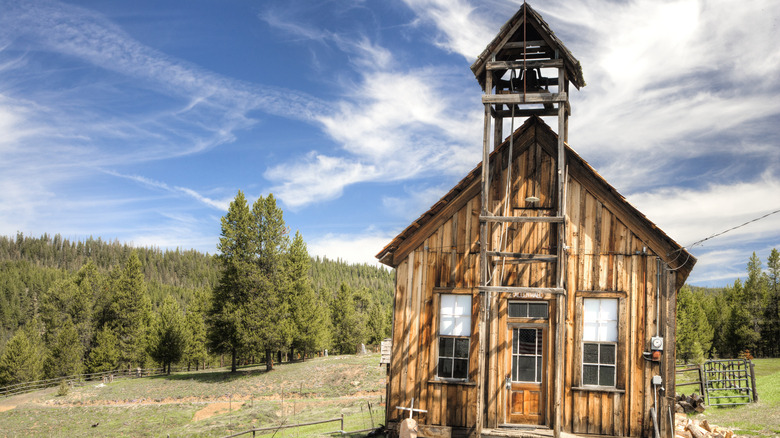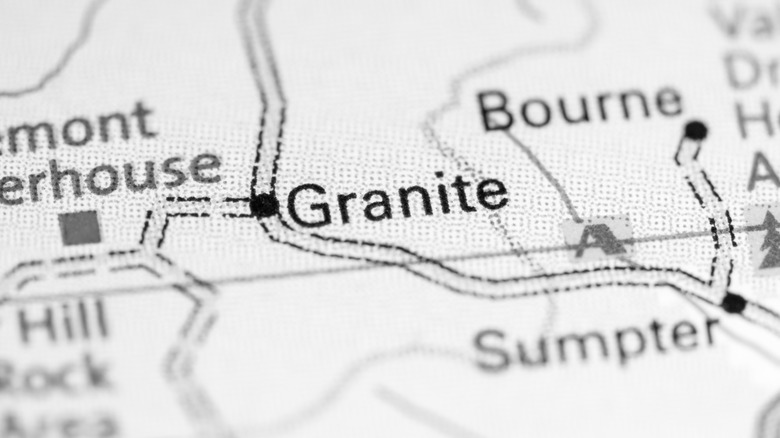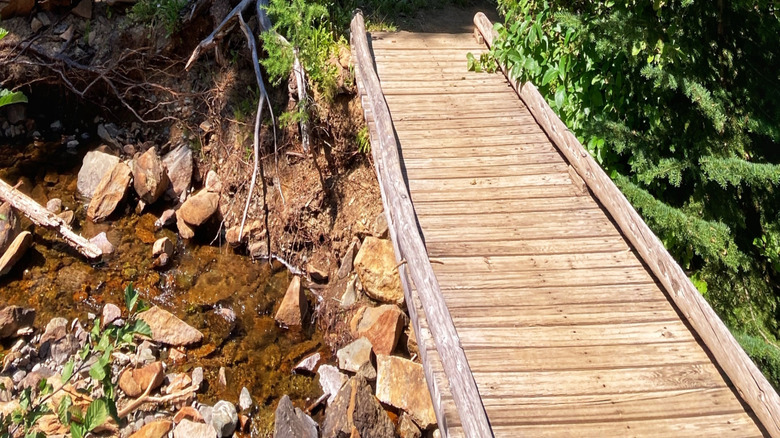Hidden In One Of Oregon's Smallest Cities Is An Abandoned Mining Town With Ample Outdoor Activities
Oregon has more than its fair share of ghost towns. From once-thriving gold rush boom towns like Cornucopia to previously-abandoned towns that have reborn like Shaniko, the state is haunted by about 200 of them. But while many of these towns remain vacant without a single resident, Granite is a particularly unique ghost town that boasts a pint-sized population despite years of sitting almost entirely empty.
Located about 60 miles west of Baker City — a small Oregon city surrounded by mountains, canyons, and outdoor adventure — Granite sits quietly in the northeastern corner of the state. Steadily crumbling 19th-century buildings line the main road, providing a window into the town's once-bustling past, and a lone cemetery dotted with faded headstones memorializes its former residents. Meanwhile, a modest collection of newer homes with lonely trucks parked out front signal the existence of the town's current inhabitants.
Surrounded by a wonderland of natural beauty, Granite makes a delightfully unique starting point for outdoor adventures in the area. So, whether you're on a ghost town hunt, seeking Oregon recreation, or all of the above, Granite is an ideal destination for a glimpse into the state's past.
The history of Granite
Like many ghost towns, Granite was a once-thriving mining town. After prospectors struck gold in the area on July 4, 1862, the town was established, and it quickly attracted more miners and residents. Given the date of the initial gold discovery, the town was originally named Independence. However, it turned out there was already an Independence in western Oregon, so the name was changed to Granite, chosen due to the abundance of the igneous rock in the area.
When the town was at its height, Granite was home to around 5,000 residents. The town was outfitted with a drugstore, five saloons, two hotels, a post office, and various other storefronts to accommodate its rapid growth. Unfortunately, when gold mining operations were outlawed in the US during World War II, the town quickly devolved. Without gold to mine, the town's electricity and telephone services were cut off, and the population had dwindled to just two residents by the 1960s. Granite sat in quiet decay until 40 years later when electricity returned to the town, jolting the population back to life with 24 residents.
Exploring Granite and the great outdoors
Today, the town boasts around 40 residents. A drive or a stroll down its main drag will expose you to its original buildings, such as the old schoolhouse, church, general store, and Granite Town Hall. Until recent years, there were two operating businesses in town. The Outback Country Store, which offered gas, food, and quirky gifts, and The Granite Lodge, which offered cozy rooms for overnight stays. Sadly, the both the lodge and store have been permanently closed, though the lodge is up for sale at the time of this writing.
While you may not be able to enjoy any amenities in Granite, the town's backyard is filled to the brim with opportunities for outdoor adventures. Situated about 13 miles west of Granite, you'll find Olive Lake. Tucked into the Umatilla National Forest, this beautiful blue body of water is surrounded by 28 campsites and a scenic two-mile hiking trail that circles its perimeter. You'll also find a boat ramp and two docks to accommodate water recreation.
Located about 8 miles east of the campgrounds is the Fremont Powerhouse, a historic power plant that provided steam power for the mines during the early 1900s. Adjacent to the powerhouse are two cabins that are available for overnight rentals, providing the perfect place for a nature-filled retreat in the woods.


